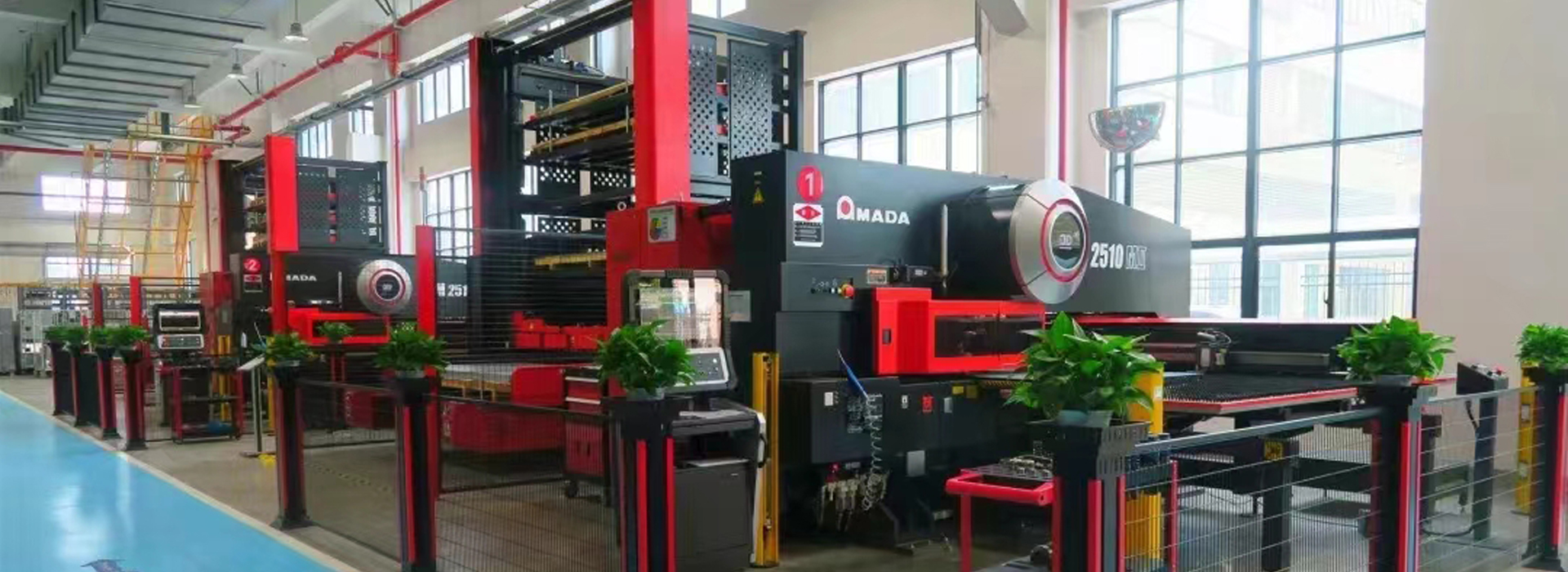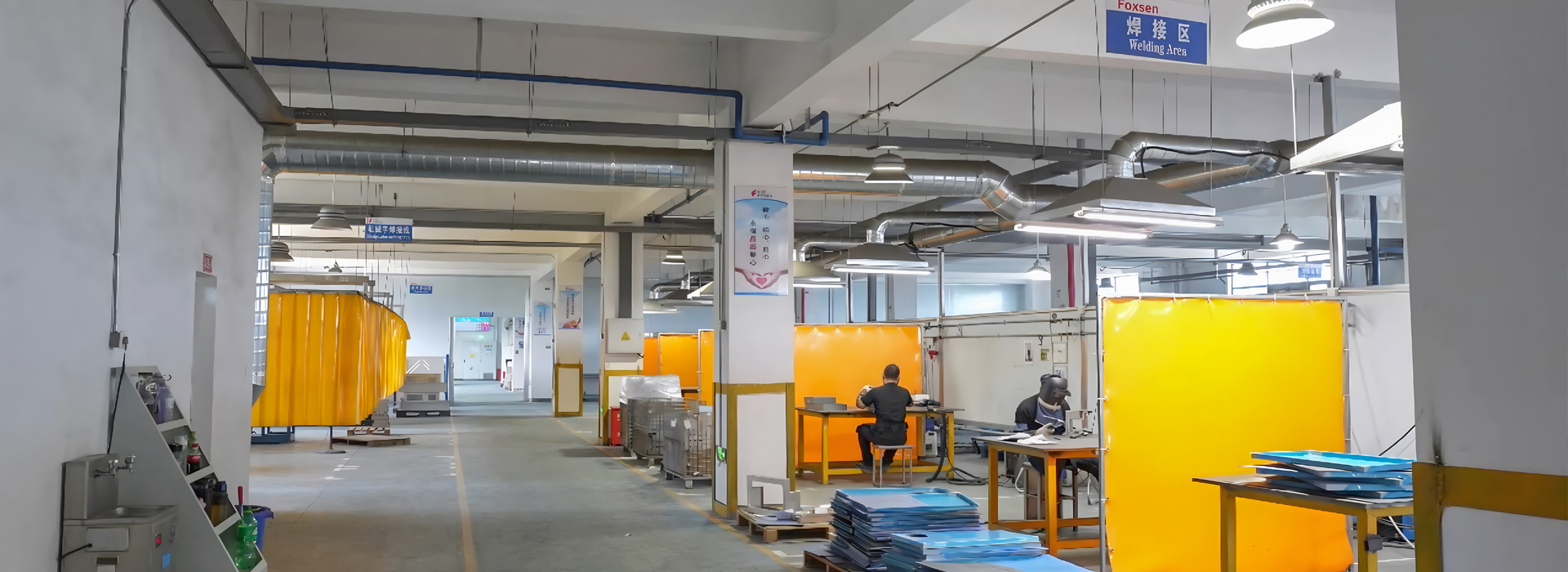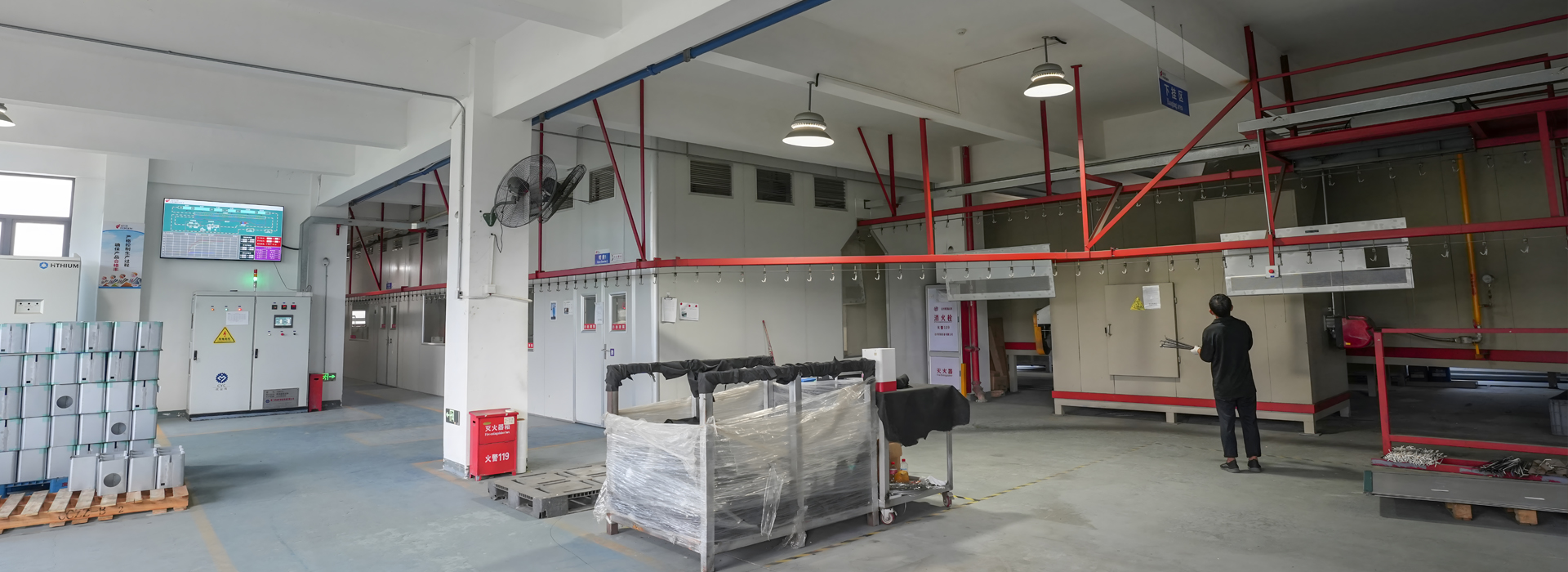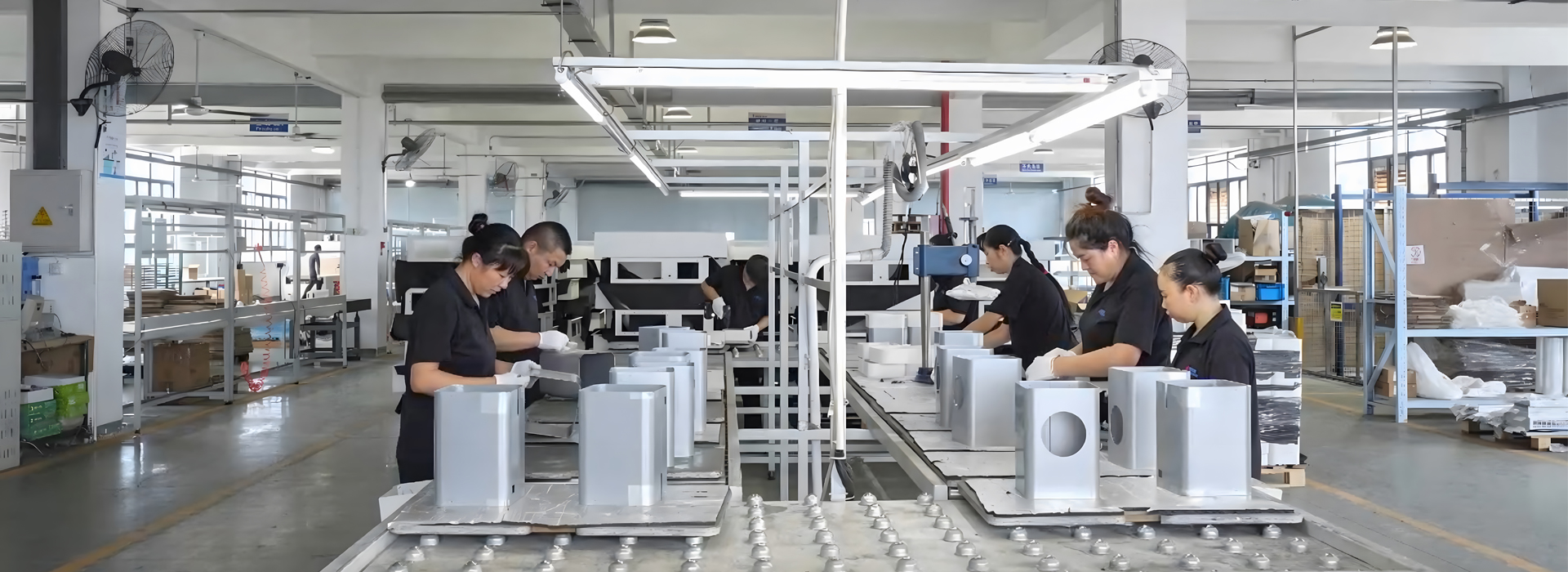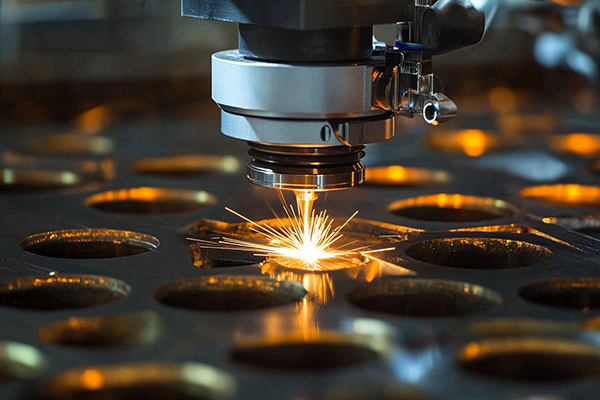Sheet metal precision stamping parts involve shaping flat metal into detailed components. Machines apply high pressure to accomplish this task. This process is highly accurate and essential for intricate designs. Unlike hand tools, it delivers consistent results every time, even for large-scale projects. It produces strong, precise parts while minimizing material waste. These precision stamped parts are crucial to modern factories, facilitating innovation and increasing efficiency across various industries
Key Takeaways
Precision stamping shapes metal into detailed parts with great accuracy.
It cuts material waste by up to 30%, helping the environment.
New tech, like machines and stronger metals, makes stamping faster.
This process is cheap for big orders and reduces wasted materials.
Picking good manufacturers gives the best results for important industries.
What Is Sheet Metal Precision Stamping?
Definition and Key Features
Sheet metal precision stamping changes flat metal into detailed parts. Machines with high pressure and custom dies make this happen. It works well for parts with complex shapes and exact sizes. Industries like automotive, aerospace, and electronics use this process a lot.
Key features of sheet metal precision stamping include:
Dimensional accuracy: Parts are made to exact measurements every time.
Tolerance specifications: Size differences stay within strict limits for better quality.
Material specifications: It works with metals like carbon steel and aluminum.
Surface finish: Extra steps may be needed for smooth textures or looks.
Welding symbols: These help parts fit well with other manufacturing steps.
Tolerances are grouped into classes for size, shape, and angles. For example, size tolerances can be fine (f), medium (m), coarse (c), or very coarse (v). Shape tolerances are labeled as H, K, or L. These show how precise and reliable the process is.
How It Differs from Traditional Sheet Metal Stamping
Sheet metal precision stamping is more advanced than older methods. Traditional stamping uses simple ways to shape metal. Precision stamping uses strong force to make detailed parts quickly.
Precision stamping is great for making lots of parts with little waste. It handles designs that older methods can't do well. Using advanced tools and machines, it makes parts faster and meets modern factory needs.
How Does Sheet Metal Precision Stamping Work?
Material Selection and Preparation
Choosing the right metal is key to stamping success. The material must meet industry standards for good results. Important traits include proper thickness, smooth surfaces, and even strength. These features affect how strong and accurate the final product will be.
Before stamping starts, the metal is cleaned and cut to size. This step removes dirt that could mess up the process. Preparing the metal also reduces waste and makes production faster.
Role of Dies and Presses in Shaping Sheet Metal
Dies and presses are tools that shape the metal. Dies are custom-made to give the metal its design. Presses push the metal into the die to form the part. Together, they make sure parts are accurate and consistent.
New technology has made dies and presses better. Machines now work faster and need less human help. Sensors check the process and allow quick fixes if needed. Improved die designs save time during setup and boost production speed.
Using these upgrades, factories can make better parts with less effort.
Stamping Techniques (Punching, Blanking, Bending, Embossing)
Stamping uses different methods to shape metal. Punching makes holes or cuts in the metal. Blanking separates a piece from the sheet. Bending changes the metal’s angle, and embossing adds raised or sunken designs.
Machines apply force to do these tasks precisely. Punching and blanking need sharp tools and strong presses for clean cuts. Bending requires careful control to avoid breaking the metal. Embossing uses detailed dies to create patterns.
Each method helps make complex parts with little waste. Learning these techniques lets factories meet the needs of industries like cars, planes, and electronics.
Quality Control and Precision Measurement
Quality control ensures parts meet exact standards in metal stamping. It reduces mistakes and keeps production consistent. By checking quality carefully, parts become more reliable and work better.
Why Quality Control Matters in Metal Stamping
Metal stamping needs strict checks to make accurate parts. Small errors can cause big problems in how parts work or fit. Quality control watches every step, from picking materials to final checks. This makes sure parts match size, shape, and finish rules.
Key parts of quality control are:
Dimensional Accuracy: Checking if parts are the right size and shape.
Surface Inspection: Looking for scratches, dents, or rough spots.
Material Integrity: Making sure the metal stays strong after stamping.
Focusing on these helps cut waste, save time, and satisfy customers.
Standards for Quality Control
Following rules keeps metal stamping consistent and reliable. These rules guide how to check and improve processes. Below is a table of common standards:
Using these standards improves how parts are made and boosts results.
How Precision Measurement Helps
Precision tools check if stamped parts meet exact needs. These tools find mistakes early, saving time and money. Common tools include:
Coordinate Measuring Machines (CMMs): Use probes to measure parts very accurately.
Optical Comparators: Show big images of parts to check size and surface.
Laser Scanning: Makes 3D images to check complex shapes closely.
These tools help fix problems fast and avoid delays.
Automation in Quality Control
Modern machines use sensors and cameras to check parts automatically. This finds mistakes quickly and fixes them. Automation also avoids human errors, keeping results steady.
For example, sensors check stamping force to stay in the right range. Cameras spot surface flaws or wrong sizes. Adding automation makes quality checks faster and more reliable.
Pro Tip: Check your tools often to keep them accurate. This stops mistakes and keeps quality steady.
Good quality control and precise checks help meet today’s factory needs. Using smart tools, following rules, and automating checks make high-quality parts that impress customers.
Benefits of Sheet Metal Stamping
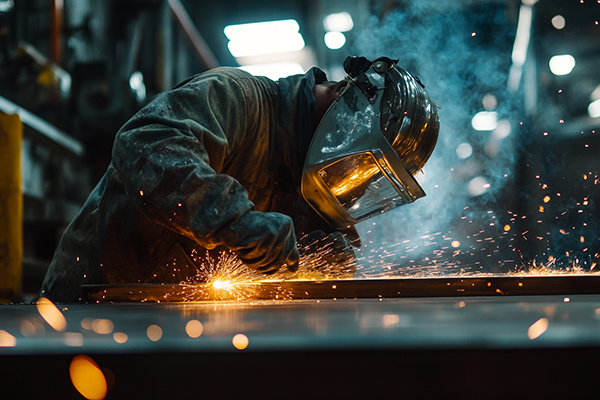
High Accuracy and Consistency in Manufacturing
Precision metal stamping is very accurate and reliable. It’s great for industries needing exact parts. This process makes parts with precise sizes and little variation. For example, in aerospace, even tiny errors can cause safety issues. Tools like CAD and CAM help ensure every part meets strict rules.
Modern machines improve consistency even more. Methods like fourslide stamping create detailed designs, like curves or bends, with repeatable results. This method works on the material from four sides, reducing extra steps. It saves time and money while making high-quality parts, even for tricky shapes.
Cost-Effectiveness for Mass Production
Sheet metal stamping is a budget-friendly way to make many parts. It cuts down on wasted material and fixes, lowering costs. For example, industries using this method see 15-25% less scrap and 20-30% fewer rework costs. Defects also drop by up to 50%, saving time and effort.
Fast machines make stamping even cheaper. They produce thousands of identical parts every minute. This speed lowers labor costs and ensures quick delivery. Whether you need simple or complex parts, this process is affordable and efficient for large orders.
Scalability for Diverse Project Sizes
Sheet metal stamping works for both small and big projects. Whether you need a few parts or millions, it fits your needs. Modern machines can make over 146 million parts each month, meeting high demands.
Flexible tools and schedules make scaling easy. Manufacturers can copy tools and adjust schedules to fit project sizes. The process keeps quality steady, even for large orders. With speeds over 1,000 parts per minute, sheet metal stamping is a fast and flexible choice for any industry.
Pro Tip: Work with trusted brands like Foxsen to get top-quality results for your metal stamping projects.
Reduced Material Waste and Environmental Sustainability
Precision stamping helps cut down on wasted materials. Smart engineering uses raw materials wisely, leaving very little scrap. Special software plans the best way to cut and shape metal. This saves resources and lowers costs for factories.
Recycling leftover metal makes this process even greener. Many factories reuse scraps for new projects. This reduces the need for fresh materials and protects natural resources. It also makes manufacturing less harmful to the environment.
Automation and quality control systems help stop waste early. These tools find mistakes fast, so bad parts aren’t made. Fixing problems early saves materials and energy during production.
Did You Know?
Precision stamping creates up to 30% less scrap than older methods. This happens because of smarter material use and better error-checking tools.
Precision stamping’s eco-friendly benefits go beyond saving materials. Using less metal and recycling lowers pollution from mining and shipping. It also supports cleaner ways to make products, helping global sustainability goals.
Choosing sheet metal stamping means helping the planet. This method is efficient, precise, and good for the environment. It’s a smart choice for industries that want to reduce their impact on nature.
Applications of Sheet Metal Precision Stamping Parts Across Industries
Automotive Industry (Body Panels, Engine Components)
In cars, sheet metal precision stamping makes body panels and engine parts. This process ensures parts are the right size for safety and performance. For example, electric motor housings need exact sizes to work well and efficiently.
Stamped parts are strong but lightweight, which helps cars use less fuel. This also meets strict environmental rules. The process can make many parts quickly, meeting the high demand in the car industry without losing quality.
Fun Fact: Modern machines can make thousands of car parts every hour, keeping production fast and consistent.
Aerospace Industry (Lightweight Structural Parts)
Planes need lightweight, strong parts, and precision stamping helps make them. Parts like brackets, frames, and panels must be light but very strong. This process ensures they meet safety and performance needs.
Materials like aluminum and titanium are common in planes. Precision stamping shapes these materials exactly, so they don’t fail under tough conditions. It also allows for creative designs that improve aerodynamics and save fuel.
Pro Tip: Working with trusted brands like Foxsen ensures you get top-quality stamped parts for aerospace needs.
Electronics Industry (Circuit Boards, Connectors)
In electronics, precision stamping is key for making circuit boards and connectors. These parts need to be very accurate to work well. This process ensures they perform reliably, especially for smooth data flow and minimal signal loss.
Stamped electronic parts often have detailed designs, like protective casings. These casings look good and protect against damage from the environment. For instance, well-made connectors reduce data loss and improve transmission quality.
This process also supports mass production, helping meet the rising demand for electronics quickly and with good quality.
Medical Devices and Equipment
Sheet metal precision stamping is important in making medical tools. It helps create parts for items like surgical scissors, diagnostic machines, and implants. These parts need to be very precise to meet strict safety rules. For example, surgical scissors must have exact sizes to work properly during operations.
This process makes parts that are always high quality. Metal stamping ensures every piece matches the needed measurements. This is crucial in medicine, where small mistakes can cause big problems.
It also works well with biocompatible materials like stainless steel and titanium. These metals are safe for the body and resist rust. Precision stamping shapes them into detailed designs without damaging their strength.
Pro Tip: Choose manufacturers who follow ISO 13485 standards. This ensures top-quality medical parts.
Renewable Energy Sector (Solar Panel Frames, Wind Turbine Components)
Renewable energy depends on sheet metal precision stamping for key parts. Solar panel frames and wind turbine pieces are good examples. These parts need to be light but strong to handle tough weather.
Precision stamping is great for making these parts in large amounts. It reduces waste while keeping quality high. Solar panel frames must fit perfectly to hold panels and capture energy well. Wind turbine parts, like brackets, must be strong to handle fast winds.
This process also helps the environment. It cuts down on wasted materials and uses recyclable metals. This supports the renewable energy sector’s eco-friendly goals.
Did You Know?
Precision stamping lowers material waste by up to 30%, making it a green choice for energy projects.
Why Is Sheet Metal Precision Stamping Important in 2025?
New Technology in Stamping
Better technology has changed how metal stamping works in 2025. Robots and automated machines now make stamping faster and more accurate. These systems need less human help, so results are steady and quick. For example, machines with sensors find mistakes fast, saving time and materials.
Stronger metals like high-strength steel make stamped parts tougher and last longer. These metals are great for industries like cars and planes. Also, 3D printing helps create tricky designs. It allows more custom shapes and works well with regular stamping methods.
These upgrades keep stamping important for modern factories and industries everywhere.
Making High-Quality Parts Faster
Precision stamping helps meet the need for better-made parts. Car makers use stamped parts to make vehicles lighter and perform better. These parts are strong and cost less, making them a smart choice.
The car stamping market is growing fast. By 2025, it could be worth $12 billion, and by 2035, $20 billion. Machines can make thousands of parts every minute, keeping production fast and reliable.
Stamped parts help cars weigh less and move better.
They improve how cars perform without losing strength.
Car makers use them because they save money and stay durable.
Precision stamping lets factories make more parts while keeping quality high.
Helping Factories Go Green
Metal stamping helps factories be more eco-friendly. It uses materials wisely, leaving less waste. Special software plans cuts to save metal, and leftover scraps are recycled to protect resources.
Compared to older methods, precision stamping uses less energy and fewer materials. Single Point Incremental Forming (SPIF) is a greener option. It needs less energy and metal, though it takes longer to finish.
Using precision stamping helps factories meet global green goals. It saves resources and energy while staying efficient.
Sheet metal precision stamping is vital for today’s manufacturing. It helps make detailed, high-quality parts with great accuracy and speed. This method works across many industries, like cars and renewable energy, meeting different needs.
Key Takeaway: Using precision stamping gives better results and supports eco-friendly goals. It reduces waste and uses materials wisely, making it a smart choice for green manufacturing in 2025.
As industries grow, precision stamping stays important for creating new ideas and meeting worldwide needs.
FAQ
What is the role of design in sheet metal precision stamping?
Design is key to making accurate and efficient stamped parts. It decides the shape, size, and limits of the product. Good design lowers mistakes, saves materials, and fits parts with others.
How does automation improve stamping design?
Automation makes stamping more precise and reduces human mistakes. Machines with sensors and software improve the process for better results. They also work faster while keeping quality high.
Can stamping design accommodate complex shapes?
Yes, stamping can create tricky shapes using advanced tools. Special dies and presses make detailed patterns and angles. This is great for industries like aerospace and electronics.
How does stamping design contribute to sustainability?
Smart stamping design cuts waste and saves energy. It uses less material by planning cuts carefully. Recycling leftover metal also helps protect the environment.
Why is stamping design important for mass production?
Stamping design helps make many identical parts quickly and reliably. This is crucial for industries like cars and renewable energy, where demand is huge.

